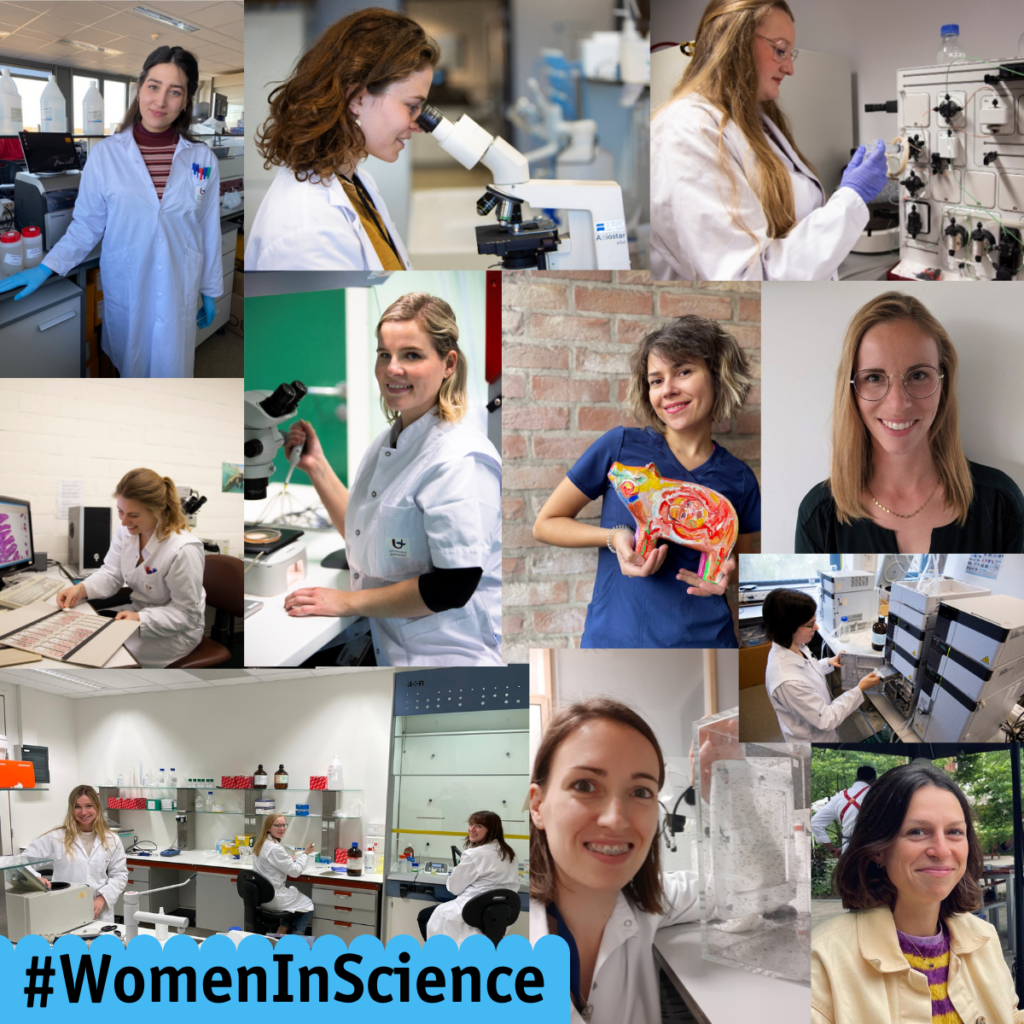
In order to achieve full and equal access to and participation in science for women and girls, and further achieve gender equality and the empowerment of women and girls, the United Nations General Assembly declared 11 February as the International Day of Women and Girls in Science in 2015. We’d like to celebrate this special day by introducing you to some of our excellent women researchers!
Diala El Masri – junior researcher
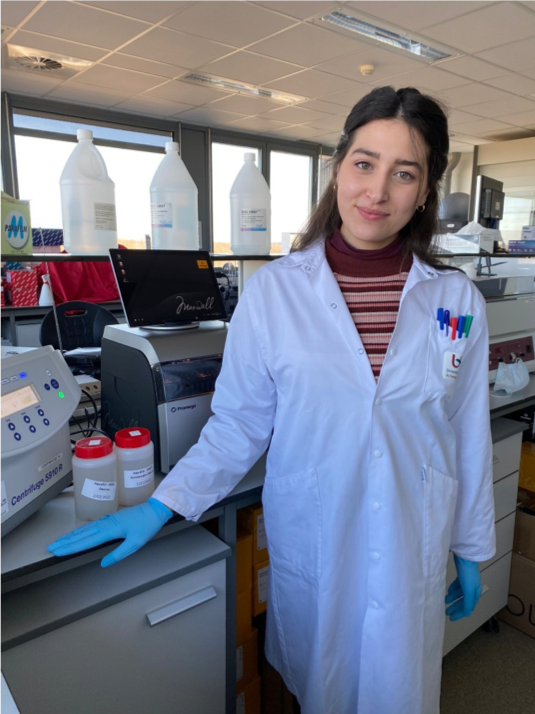
I’m Diala El Masri and I’m a Junior Scientist working with Prof. Peter Delputte in the Laboratory of Microbiology, Parasitology and Hygiene (LMPH). My research focuses on SARS-CoV-2 wastewater analysis.
Following the global outbreak of COVID-19, it became very important to be able to measure, in an unbiased way, how fast the virus is circulating. At LMPH we collaborate with Sciensano to study the circulation of SARS CoV-2 in wastewater, which works as an early warning system, as it helps to predict the number of clinical cases. This study is very relevant, as our findings could lead towards the prevention of this contagious disease. Wastewater epidemiology is not only useful for SARS-CoV-2, but also for tracking the spread of other viruses and even for the detection of antibiotic resistance. During the SARS-CoV-2 pandemic, I realised as a researcher that it was crucial to spread awareness about this pandemic, and I actively participated in creating awareness. My research contributions as a woman scientist have helped me to believe more in myself. I can see how much value women scientists add to society. One piece of advice that I would give to early career women scientists is to believe in the positive changes that they are making!
Marina Stroe – PhD student
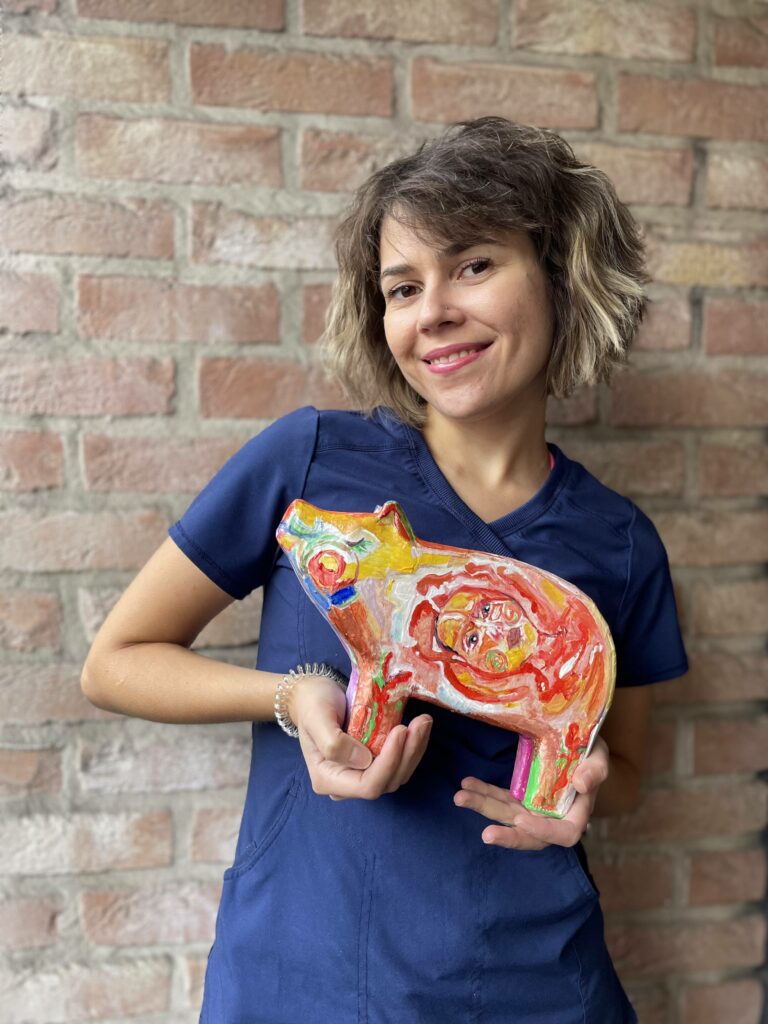
I am Marina Stroe and I’m currently in my second year of my PhD in Veterinary Sciences and my supervisor is Prof. Steven Van Cruchten. I am working on the I Predict research project, which is a collaboration between KU Leuven, UZ Leuven, UZA and UAntwerp. I am researching perinatal asphyxia. This is a medical condition that affects 2 to 10 per 1 000 term babies globally, of which approximately one million die. It is caused by oxygen deprivation, that can occur in utero, during labour or delivery, and is the leading cause of severe neurological conditions, such as hypoxic ischemic encephalopathy (HIE). No specific treatment is currently available, except for therapeutic hypothermia. In these cases, intensive care unit admission with multiple medicine therapies (sedatives, antibiotics, analgesics), is often needed. To understand the impact of therapeutic hypothermia and asphyxia on the metabolism of these medicines, our research team uses the minipig as an animal model for in vivo and in vitro studies. The similarities between pigs and humans, which have many close similarities in bodily functions and metabolism, make pigs a valuable tool for understanding how the human baby body works and for developing and testing new medicines.
Karen Claesen – PhD student
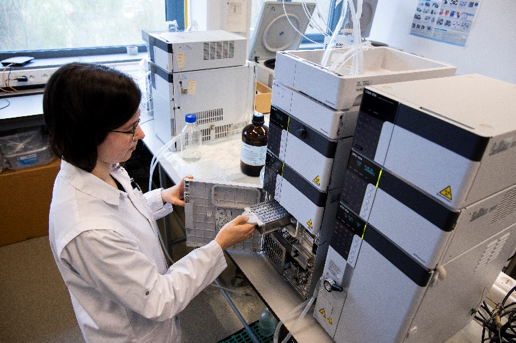
My name is Karen Claesen. I graduated as a pharmacist in drug development at the University of Antwerp in 2018. After graduation I started my PhD research at the Laboratory of Medical Biochemistry under supervision of Prof. Dirk Hendriks and Prof. Ingrid De Meester, which I combine with an advanced Master’s program in Clinical Biology/Laboratory Medicine.
My PhD research focuses on the enzyme carboxypeptidase U (CPU), a potent attenuator of fibrinolysis. Fibrinolysis is a process that prevents blood clots that occur naturally from growing and causing problems. The enzyme CPU is present in the circulation, as is its inactive precursor procarboxypeptidase U (proCPU). Statins, a class of lipid-lowering medicines, possess a range of non-lipid-related pleiotropic effects, potentially also influencing fibrinolysis. The aim of my research is to assess whether statin therapy is able to downregulate the CPU system and thus its potential to promote fibrinolysis. I study this using two different approaches. First, by measuring different CPU-related parameters in plasma samples collected from hypercholesterolemic patients treated either with a statin or in untreated hypercholesterolemic patients. In a second approach, I determine proCPU levels in a mouse model of advanced atherosclerosis in which statins do not lower cholesterol. By doing so I am trying to unravel whether or not a potential effect on the CPU system is directly related to the lipid-lowering properties of statin therapy.
Lieselotte Van Bockstal – doctor assistant

I’m Lieselotte Van Bockstal and I’m a doctor assistant working with Prof. Chris Van Ginneken and Prof. Steven Van Cruchten in the Comparative Perinatal Development Group. My research focuses on animal models during pre- and postnatal development, which can contribute to the understanding of certain human pathological conditions. Beside research activities, I am also involved in organising and running the practical classes for the Laboratory Animal Science and Veterinary (Neuro)Anatomy courses.
Kerlijne Moorkens – PhD student
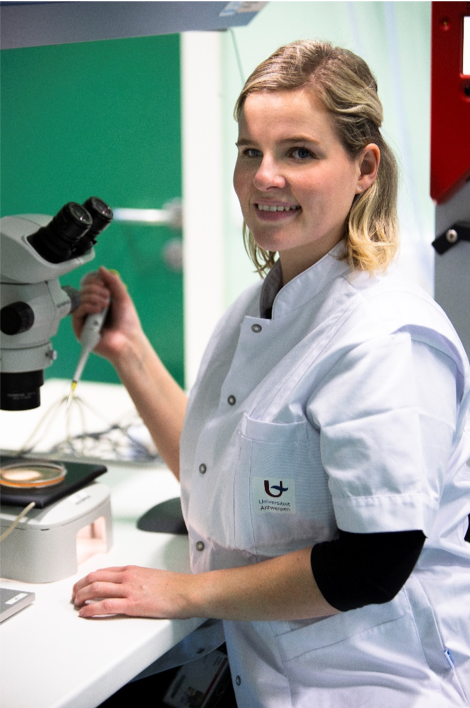
I’m Kerlijne Moorkens and I work with Prof. Jo Leroy in the Gamete Research Centre. My research focuses on studying metabolic disorders that are associated with the consumption of a Western type diet (a high fat/high sugar diet), which are strongly linked with reduced fertility in women. Direct detrimental effects of such metabolic alterations on oocyte quality have been documented. However, whether these effects occur acutely or after chronic exposure to a Western type diet and which effects appear in other regions of the reproductive tract and ovary remain unclear. For my PhD research, I aim to investigate potential changes in the composition and function of reproductive tissues over time, after the onset of feeding a Western type diet.
Yentl Van Rymenant – PhD student
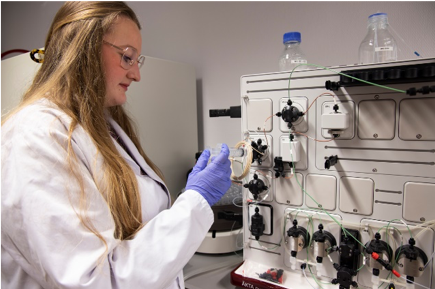
I’m Yentl Van Rymenant. After finishing my Master in Biomedical Sciences in 2019, I started my PhD in the Laboratory of Medical Biochemistry (LMB) supported by an FWO-SB fellowship and under the supervision of Prof. Ingrid De Meester and Prof. Pieter Van Der Veken.
Together we are investigating the diagnostic potential of fibroblast activation protein (FAP) in cancer. FAP is an important protein that is selectively expressed in cancer and not in normal healthy tissues, which makes it a very interesting protein to explore. With our research, we are designing new tools and methods to detect and image FAP in cancer. For example, our tools can be used to characterize tumor biopsies. Furthermore, new FAP-targeting PET probes to diagnose cancer non-invasively are also under investigation in collaboration with Prof. Filipe Elvas (Molecular Imaging Centre Antwerp). Moreover, our recently developed tools are also being used to gain more fundamental insights into the exact function of this protein in the tumor-microenvironment.
Celeste Laureyssen, Lara De Deyn, Lena Duchateau – PhD students
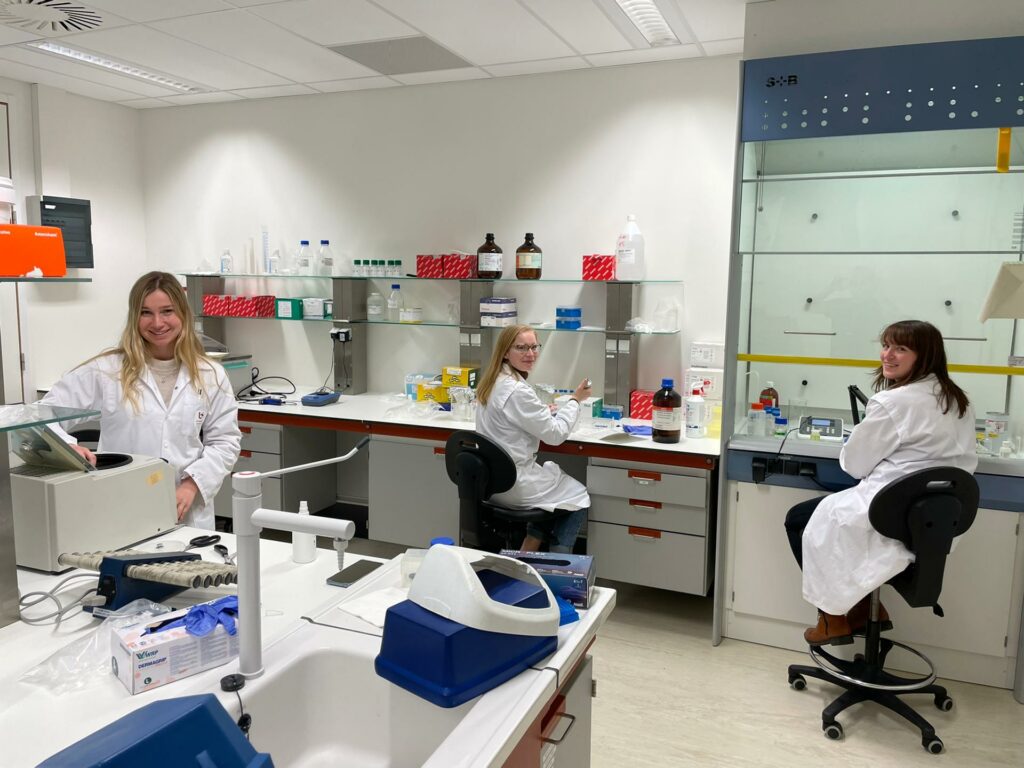
Celeste Laureyssen (left), Lara De Deyn (center) and Lena Duchateau (right) are PhD students working with Prof. Kristel Sleegers in the Center for Molecular Neurology (UAntwerp/VIB). They are researching the complex genetics of Alzheimer’s disease. By using advanced molecular techniques they aim to gain new molecular insights so that novel methods of detection, prevention and treatment can be found.
Joni De Loose – PhD student
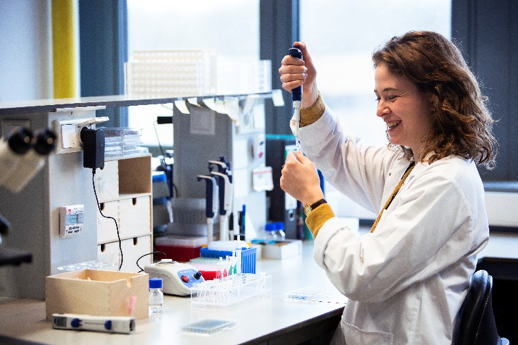
“It is very easy to answer many of these fundamental biological questions; you just look at the thing!” said Nobel laureate Richard Feynman. My name is Joni De Loose and as a PhD researcher, the thing I am looking at is a fascinating protease that orchestrates the immune response.
With much motivation and curiosity, I started my PhD at the Laboratory of Medical Biochemistry (LMB) in 2019 after graduating as a pharmacist in drug development at the University of Antwerp. Supported by an FWO fellowship and under the supervision of Prof. Ingrid De Meester and Prof. Yann Sterckx, I am working towards the discovery of novel characteristics of dipeptidyl peptidase 9 (DPP9).
DPP9 belongs to a class of enzymes called serine proteases. It functions as a key player in pro-inflammatory cell death and is a regulator of the innate immune response. By using various biochemical techniques, we aim to gain novel insights into this protease in primary human cells including monocytes, macrophages, dendritic cells, T cells and endothelial cells.
I am part of a wonderful, supportive research team and together we are pursuing the questions relevant for unraveling the therapeutic potential of this fascinating protease.
Pauline Puylaert – PhD student
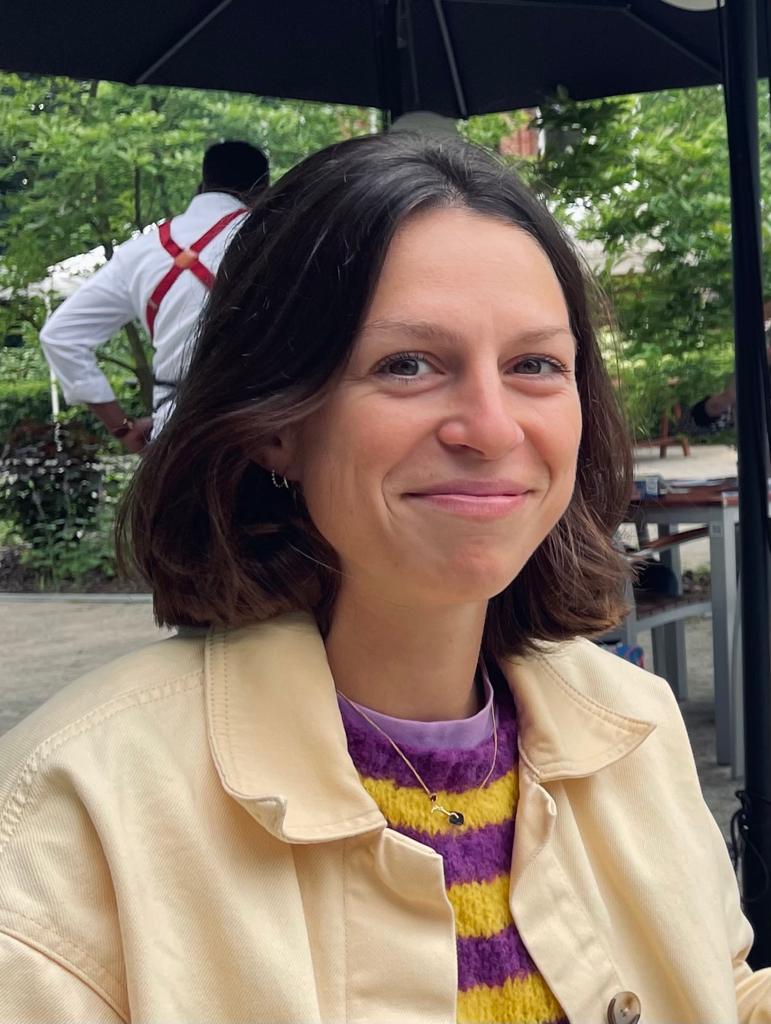
I’m Pauline Puylaert and I’m a PhD student working with Prof. Wim Martinet and Prof. Guido De Meyer in the Physiopharmacology lab. My research is focused on atherosclerosis, a disease in which blood vessels narrow due to the build-up of lipid-filled plaques in the vessel wall. This can eventually lead to occlusion of the vessels resulting in stroke, heart attack or even sudden death, which make cardiovascular diseases still the number one cause of death worldwide. Therefore we aim to find pharmacological targets to treat atherosclerosis, mainly focusing on inflammation and necrosis that occur inside advanced plaques. Through in vitro and in vivo experiments I am trying to unravel pathways that mitigate necrosis and to determine how they affect atherosclerosis initiation and progression.
Sarah Hendrickx, PhD – Research coordinator
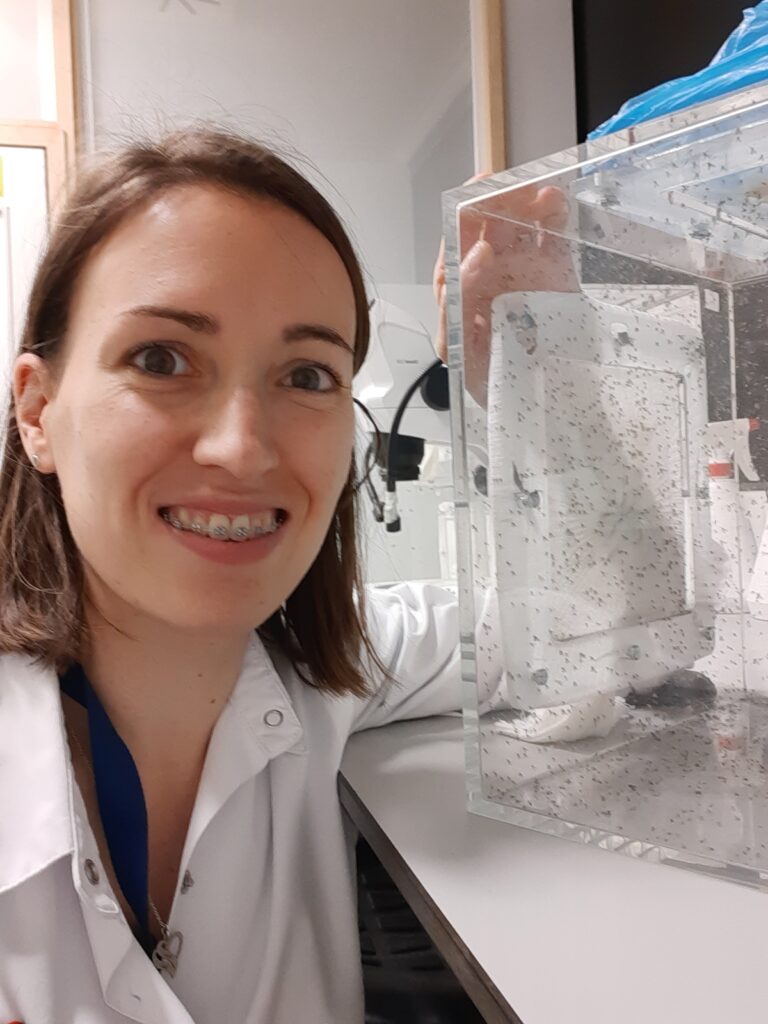
I’m Dr. Sarah Hendrickx and I work with Prof. Guy Caljon in the Laboratory for Microbiology, Parasitology and Hygiene (LMPH). My research focuses on a parasitic infection called leishmaniasis. The unicellular Leishmania parasite is transmitted by the bites of infected sand flies and causes either localized lesions at the bite site or a severe, fatal infection, affecting internal organs such as the spleen, liver and bone marrow. Unlike others, this parasitic infection, called leishmaniasis, is not only restricted to subtropic and tropic areas, but it can also be found much closer to home, such as in the Mediterranean region. As this disease still mainly affects poor populations, it generally gains little interest from the pharmaceutical industry, leaving this intriguing disease in the hands of academic partners.
Although disease dynamics and immunology of leishmaniasis are well-studied in various animal models by many labs worldwide, the role of the sand fly vector so far has often been overlooked. However, in the past years it became clear that the role of the vector is exceeding that of a ‘flying syringe’. It seems that the interaction between the parasite, the sand fly and the host is complex and that various factors, either fly, host or parasite-specific, might impact subsequent infection. With my research I hope to shed light on these complex interactions. Prof. Caljon’s lab is a unique environment for doing this as it is one of only a few labs worldwide where parasite, vector and host research is combined. Gaining a better understanding of these complex interactions will be instrumental in the search for novel vaccine candidates or host–directed or transmission-blocking therapies.
Laura Peeters – PhD student

My name is Laura Peeters and I work with Prof. Nina Hermans in the Natural Products & Food Research and Analysis (NatuRA) lab. I am in the final stage of my PhD project titled: “An integrated strategy to characterize active constituents and their metabolites in Herniaria hirsuta and Nauclea pobeguinii”.
When screening for new compounds originating from herbal extracts, I took into consideration the biotransformation and activation processes after oral intake. Biotransformation is the chemical modification that happens in the body after a compound is ingested, and this is often overlooked during classical medication screening approaches. I used a specific in vitro biotransformation model, thus avoiding animal studies, combined with automated data analysis. Ultimately, the metabolites are tested in in vitro activity assays to assess antilithiatic and antiplasmodial activity of Herniaria hirsuta and Nauclea pobeguinii, respectively.
